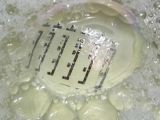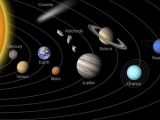It’s Sunday again, so bring out the pillows and the snacks, and get ready to celebrate the end of another week in style. Otherwise put, enjoy your hard-earned hours of rest and try not to think about the fact that a brand new workweek will soon be upon us.
Since it’s Sunday, there is one other very important thing to do apart from napping or whatever it is that relaxes you best: take a few minutes to check up on scientists and researchers around the world. So, without further ado, here is our latest round-up of the week’s coolest brainy news.
10. Teenager diagnosed with fear of growing up
Admittedly, this one news isn’t of the kind that can make and break our little world. Still, it’s fairly interesting, seeing how it speaks loads about the complexity of the human mind. Not to beat around the bush, here’s what it is about: not long ago, a teenager in Spain was diagnosed with fear of growing up.
The boy, whose identity remains a mystery, started behaving oddly when he was about 11. In time, his condition got worse. He stopped eating to his heart’s desire because he was trying to keep his body from developing, he began talking in a high pitch looking to sound like a child and even made his mother sing him lullabies when he went to bed.
Although extremely rare, his condition, dubbed geraschophobia, is not entirely unheard of. On the contrary, a couple other cases have so far been documented. In the case of this 14-year-old, specialists used antidepressants and therapy to address his symptoms. They boy now feels somewhat better but still dreads having to grow up and handle the responsibilities all adults face.
9. Bronze sculptures argued to be the work of Michelangelo
This week, two gorgeous bronze sculptures went on display at the Fitzwilliam Museum in the city of Cambridge in the UK. What’s interesting is that, according to specialists who have taken the time to examine them, the statues might be the work of Renaissance artist Michelangelo.
The sculptures, a photo of which is included in the gallery below, each show a muscular man riding a panther. Seeing how detailed the figures of these two men are, there is no doubt that whoever made them had a keen interest in the male human body.
What’s more, art experts say that the statues are strikingly similar to Michelangelo’s David. Hence, it is possible that they are the creation of this Renaissance artist. If the sculptures are, in fact, the work of Michelangelo, this would make them the artist’s only known surviving bronzes.
8. Super cool electronic skin could give us a sixth sense
Thanks to a new super cool electronic skin developed by a team of researchers in Germany, perfectly average guys and gals could become kind of, sort of like Marvel’s villain Magneto. Thus, the scientists who worked on this project claim that the skin might give people a sixth sense.
More precisely, they say that, with their help, ordinary folks could gain the ability to detect magnetic fields. True, they would not be able to manipulate them like Magneto does, but just being able to feel their presence would nonetheless be pretty cool.
The high-tech skin developed by brainiacs in Germany is freakishly thin and pliable. When wearing it on their body, people would be able to perceive the presence of magnetic fields, just like some birds and sharks do. The skin could also serve to make medical implants more efficient.
7. Compound in red wine said to benefit the brain
Having carried out a series of experiments in laboratory conditions, researchers found evidence that a compound in red wine might offer protection against memory loss. The compound in question goes by the name of resveratrol and is also found in peanuts and berries.
In a report detailing their work, the scientists behind this study argue that, as indicated by the outcome of their experiments, resveratrol benefits the human brain. Specifically, it improves activity in the hippocampus, a brain region involved in learning and memory processes.
Consequently, it’s safe to assume that it might be possible to use this compound to limit the memory decline that comes with aging. Interestingly enough, specialists believe that, given its positive effects on the brain, resveratrol could even be used to treat neurodegenerative disorders.
6. Lightning seen moving upwards over the Atlantic
It might be that lightning never strikes twice in the same place, but as it turns out, it can most definitely strike in insane directions. Thus, this week, scientists released a video showing lightning discharges moving upwards over the Atlantic.
The video in question was shot back in August 2013, during the Tropical Depression Dorian. The upwards-moving lightning strikes that researchers managed to film during this storm all came from the same thundercloud region. However, they looked very different from one another.
As explained by the scientists who documented them, some reached an altitude of just 20 to 30 kilometers (12.5 to 18.5 miles). The more impressive ones reached altitudes of 40 to 50 kilometers (25 to 31 miles), even 70 to 90 kilometers (43.5 to 56 miles).
5. New view of Pluto obtained by NASA’s New Horizons spacecraft
NASA’s New Horizons spacecraft is now en route to Pluto, a dwarf planet circling the Sun at the edge of the Solar System. On January 25 and 27, the probe obtained two new images of this celestial body and its largest moon, Charon. The images, released by NASA just days ago, are available below.
Truth be told, this latest view of Pluto and its accompanying moon Charon isn’t all that impressive. Then again, the images were obtained from a distance of over 126 million miles (203 million kilometers) away, so the blurriness is well justified.
NASA scientists promise that, as it moves closer to the Pluto system, the New Horizons spacecraft will beam back clearer images. The best will reach us sometime towards the end of July, after the probe completes its much-awaited flyby of Pluto and its moons.
4. 1,500-year-old gospel revealed to be an oracle
A 1,500-year-old text known as the Gospel of the Lots of Mary isn’t so much a gospel per se as it is an oracle. In a nutshell, it appears that this text contains very few references to the life and the crucifixion of Jesus. It does, however, promise to help people work out their problems.
Researchers say that this so-called Gospel of the Lots of Mary, handwritten in a lost language known as Coptic, is basically a collection of 37 texts that people used to turn to for advice. Because these texts are all rather ambiguous, people were free to interpret them as they saw fit.
What’s interesting about this 1,500-year-old book is the fact that, as it turns out, its ambiguous character didn’t stop people from using it whenever they were in trouble and needed help figuring out what to do. On the contrary, this gospel is surprisingly worn and sports a whole lot of thumbprints on its covers.
3. Drug-resistant bacteria found in NYC’s subway system
Not that anybody would ever expect to enjoy completely germ-free tube rides, but as it turns out, the subway system in New York City, US, is especially dirty. As explained by scientists, this subway system is home to a whole lot of bacteria, some of which are drug-resistant.
The freaky part is that, of the bacteria species that now call New York City’s subway system their home, some aren’t even documented by science. Even wackier, it looks like anthrax genetic material, together with DNA from the bubonic plague pathogen, is also present.
However, specialists say that this does not mean that folks should start avoiding the tube. In fact, they say that the presence of these bacteria is no reason to worry and that there is no evidence that the microorganisms are a threat to the wellbeing of New York City’s residents.
2. Too much exercise said to be as dangerous as a sedentary lifestyle
In a new report, researchers warn that folks who jog too often and with too much devotion risk developing all sorts of health trouble and die while still at a young age. In other words, there is such a thing as too much exercise and it can prove deadly.
The scientists now saying that going for an intense run one too many times per week can prove just as harmful as leading a sedentary life base their claim on information obtained while monitoring about 1,500 volunteers over a period of time of 12 years.
Of the people that this investigation focused on, those who jogged regularly and at a moderate pace were indeed quite healthy. However, the researchers were surprised to document a similar mortality risk among the more sedentary study participants and the avid joggers that they monitored.
1. On Friday 6, Jupiter came stunningly close to Earth
This past Friday, February 6, Earth passed between the Sun and Jupiter, and these three celestial bodies aligned almost perfectly. What this means is that, when the Sun set in the west, Jupiter rose in the west. Hours later, when Jupiter descended in the west, the Sun once again appeared in the east.
The best part is that, when this happened, Jupiter found itself at a distance of just 650 million kilometers (some 404 million miles) from our planet. As a result, this cosmic neighbor of ours appeared especially bright and clear in the sky.
Astronomers say that, during this cosmic event, regular binoculars proved more than enough for regular guys and gals to be able to see the planet’s silhouette and even of its moon. In case you missed this week’s stunning view of Jupiter, worry not, the planet will once again appear clear and bright in our night sky in 2019.
Well, there you have them, this week’s best science news and announcements. If you count yourself among those people who like to keep up to date with what researchers are up to these days, be sure to check this page again next Sunday. Another round-up will be waiting for you, as per usual.

 14 DAY TRIAL //
14 DAY TRIAL // 









